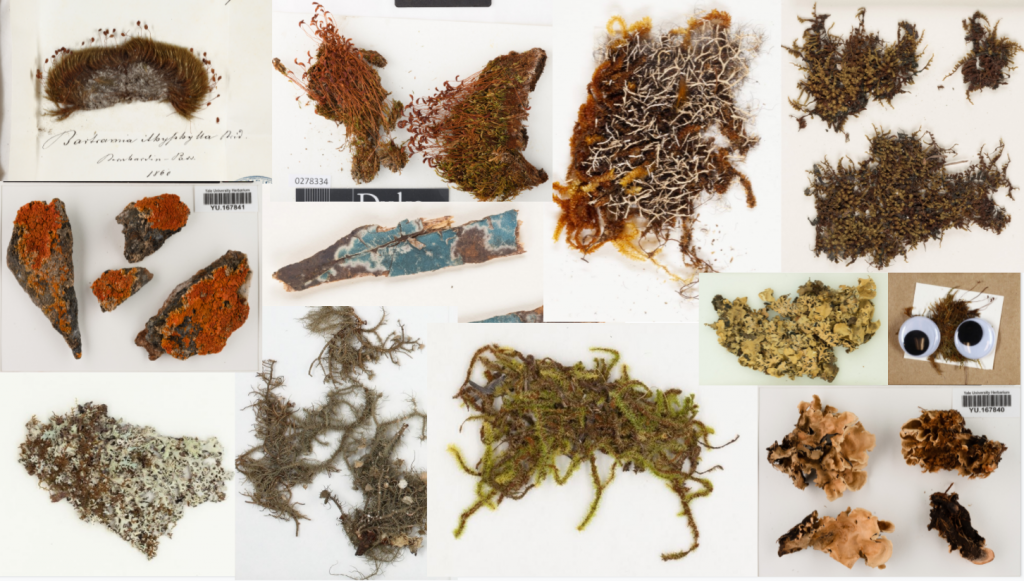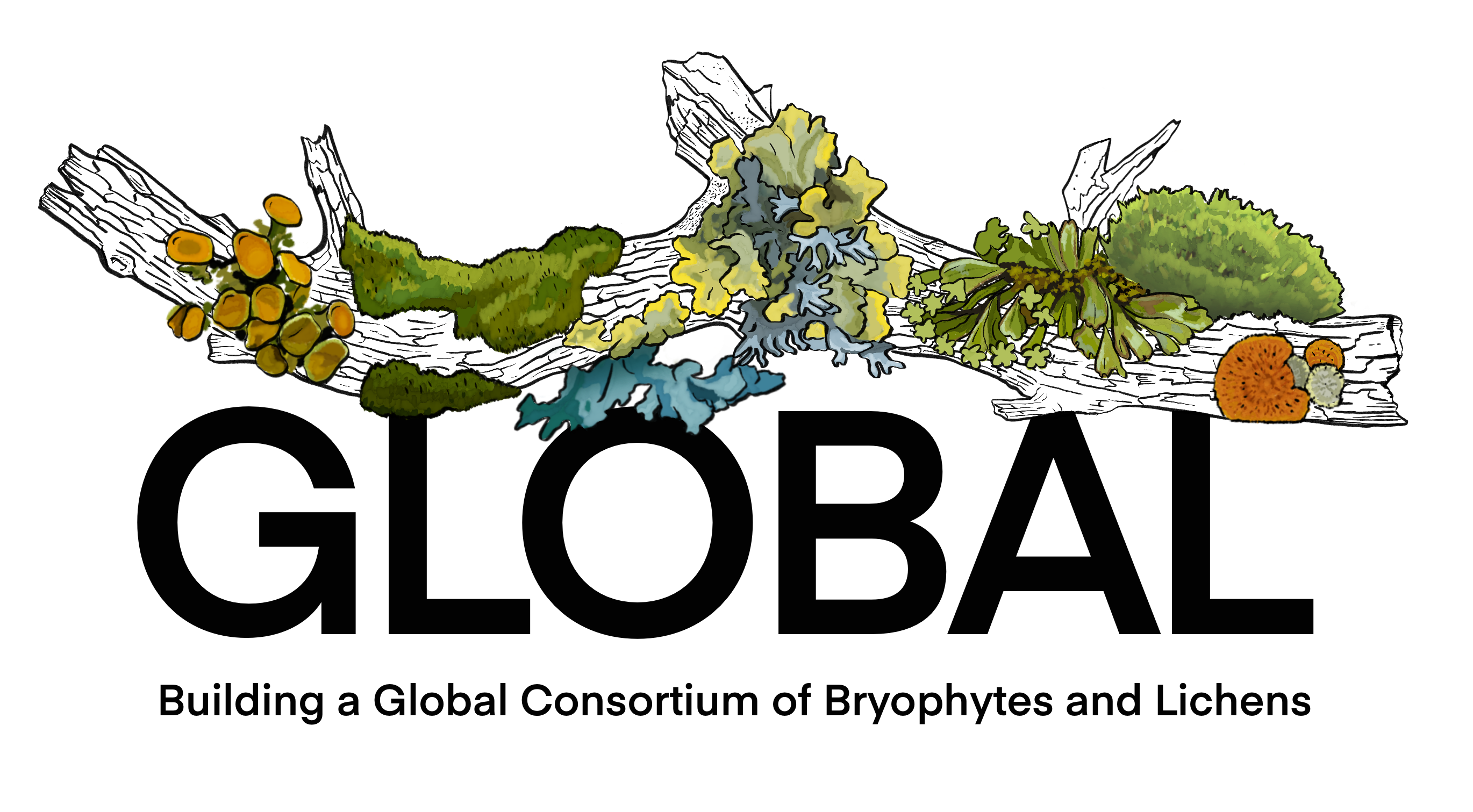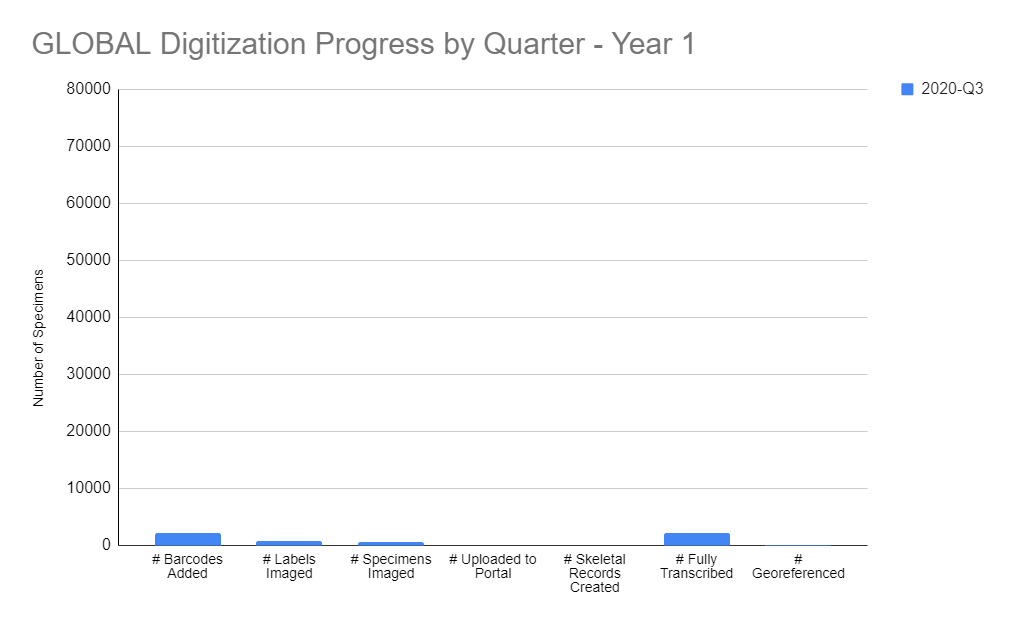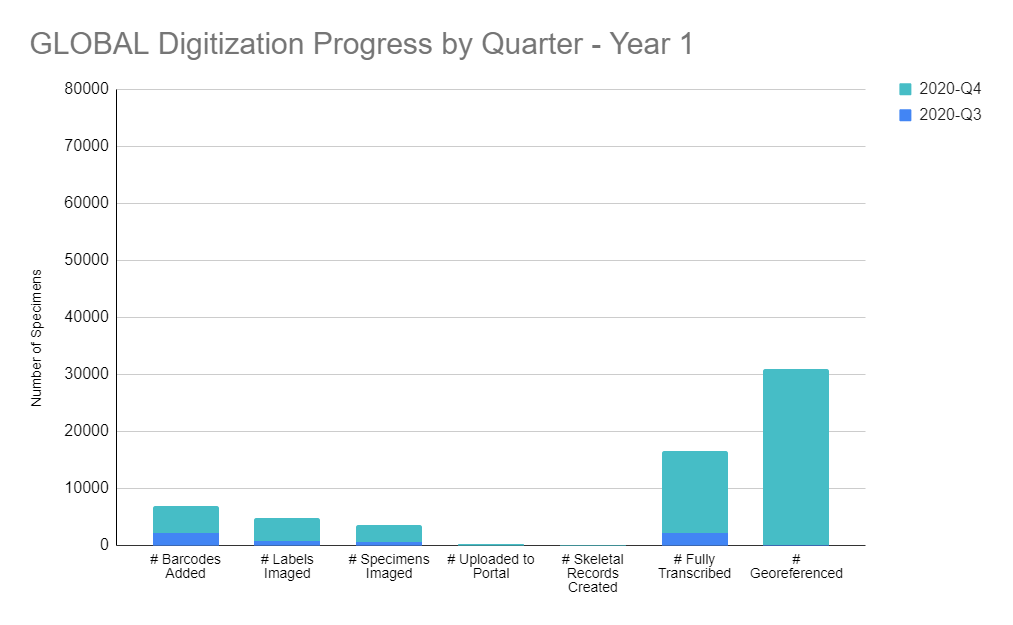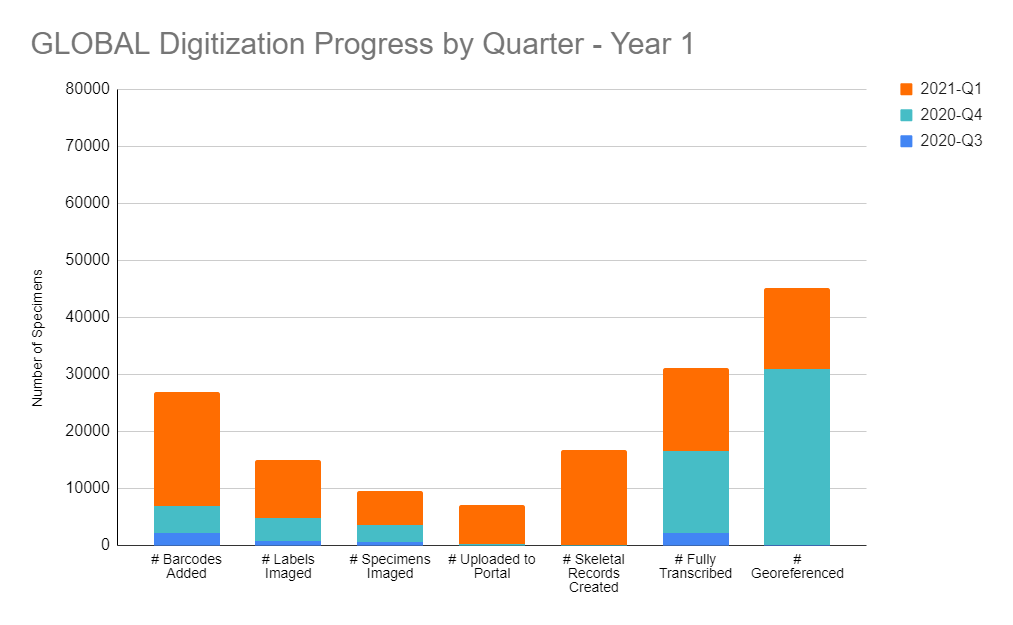September 2021 marks one year since the start of our GLOBAL TCN project. This same month in 2020 saw a virtual kick-off, with a slow and staggered start under significant COVID-19 restrictions. Most collaborating institutions had limited to no access to their collections and many student workers were away from campus studying virtually. In spite of these challenges, the GLOBAL team made important headway toward our digitization goals during Year 1. Adapting to limited access, photography stations were set up at home, labels were transcribed remotely, and many, many Zoom meetings were held to stay connected across the country.
In September 2020, only 5 collaborators were able to start work on the project, imaging 800 labels and 500 specimens (see dark blue bars below). As our teams improved their processes and access restrictions eased, we saw continuous gains in our efforts throughout Year 1. We now have 20 institutions actively digitizing and during our last reporting period over 25,000 labels and 29,000 specimens were imaged (see purple bars below)!
Over 100 people have been involved in the GLOBAL TCN so far across the collaboration. More than 40 students gained skills in the proper care and handling of specimens, photography, image processing, accurate data entry and management, and geolocation. Several had the opportunity to actively participate in workflow development, outreach, and the training of other students and volunteers. Many valuable digitization resources and best practices were developed and are shared online with the wider collections community.
Over 50,000 new bryophyte and lichen specimen records were uploaded to the Bryophyte and Lichen Portals in Year 1. These data will enhance research in many areas including biodiversity, community ecology, plant biology, systematics, and knowledge of rare and endangered species. As we move into Year 2, we plan to continue to learn, adapt, and work together to make even more of these amazing GLOBAL specimens accessible to users around the world.
